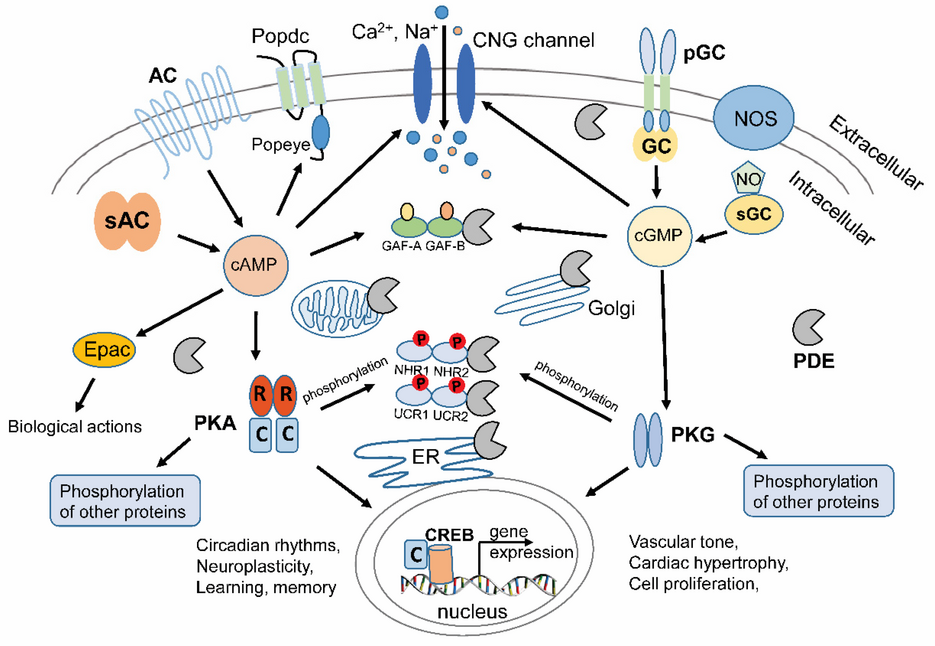Advances, Perspectives and Potential Engineering Strategies of Light-Gated Phosphodiesterases for Optogenetic Applications
05.10.2020Advances, Perspectives and Potential Engineering Strategies of Light-Gated Phosphodiesterases for Optogenetic Applications
Yuehui Tian, Shang Yang and Shiqiang Gao
Int. J. Mol. Sci., 21(20), 7544
The second messengers, cyclic adenosine 3 -5 -monophosphate (cAMP) and cyclic guanosine ′′
3 -5 -monophosphate (cGMP), play important roles in many animal cells by regulating intracellular signaling pathways and modulating cell physiology. Environmental cues like temperature, light, and chemical compounds can stimulate cell surface receptors and trigger the generation of second messengers and the following regulations. The spread of cAMP and cGMP is further shaped by cyclic nucleotide phosphodiesterases (PDEs) for orchestration of intracellular microdomain signaling. However, localized intracellular cAMP and cGMP signaling requires further investigation. Optogenetic manipulation of cAMP and cGMP offers new opportunities for spatio-temporally precise study of their signaling mechanism. Light-gated nucleotide cyclases are well developed and applied for cAMP/cGMP manipulation. Recently discovered rhodopsin phosphodiesterase genes from protists established a new and direct biological connection between light and PDEs. Light-regulated PDEs are under development, and of demand to complete the toolkit for cAMP/cGMP manipulation. In this review, we summarize the state of the art, pros and cons of artificial and natural light-regulated PDEs, and discuss potential new strategies of developing light-gated PDEs for optogenetic manipulation.


